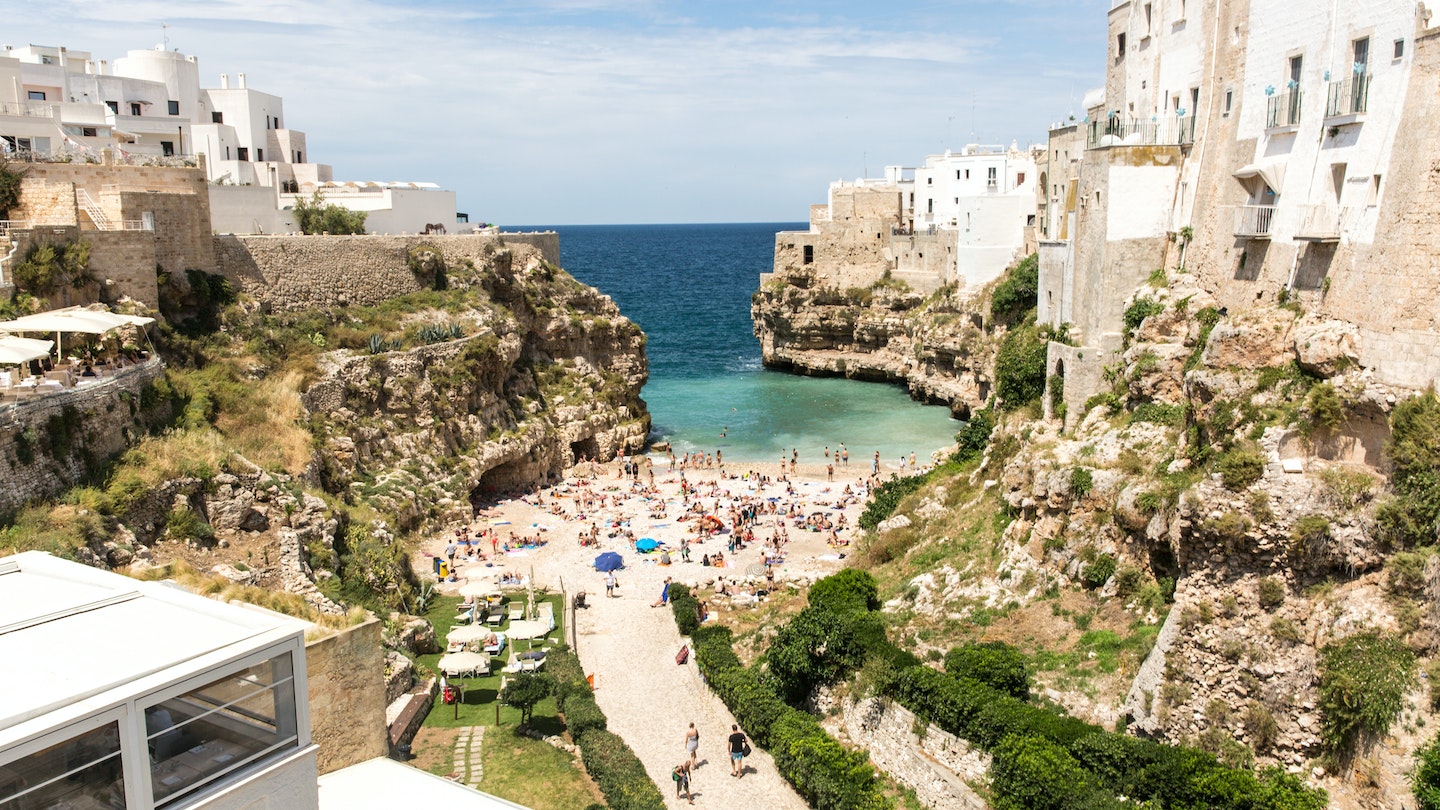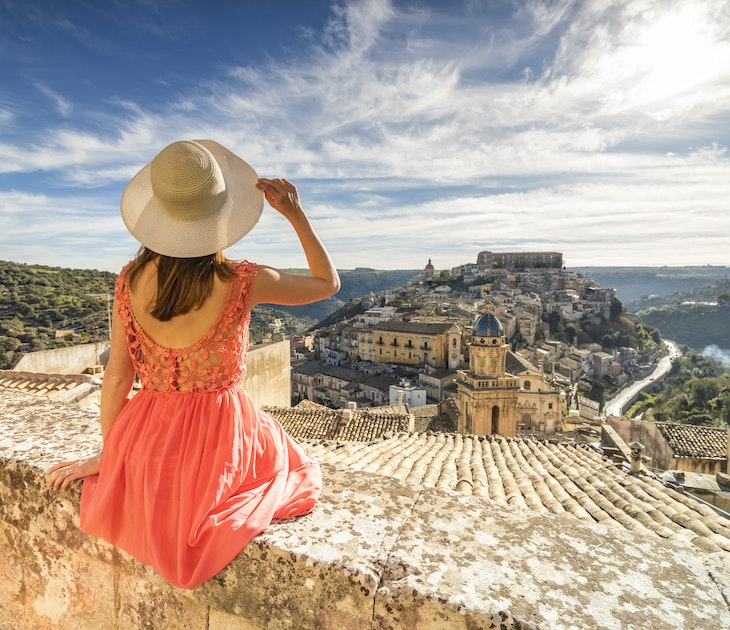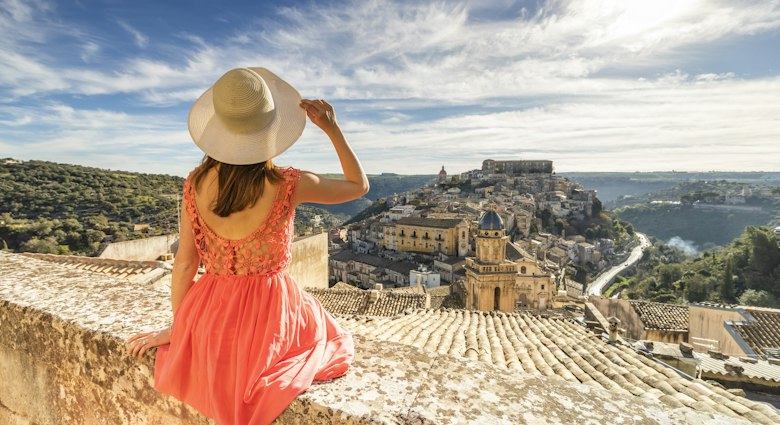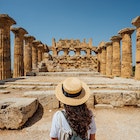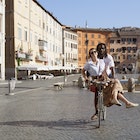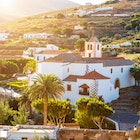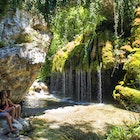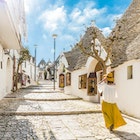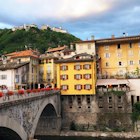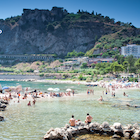It’s hard to believe that Puglia once played second fiddle to the likes of Tuscany.
Spanning Italy’s sinuous stiletto, this luminous southern region has some of the country’s cutest villages, quirkiest architecture and most knockout beaches. From a wild, wooded promontory to baroque cities and curious Hellenic towns, the following places merit a spot on any "Must See" Puglian hit list.
1. Bari
Forget the North Pole: you’ll find the real Santa in Bari. The city’s Herculean Basilica di San Nicola shelters the relics of St Nicholas, whose fondness for secret gift giving inspired the sleigh-riding legend of today. Yet, there’s more to this energetic port than its 12th-century Norman cathedral (and convenient ferry connections to Greece, Albania, Montenegro and Croatia).
Its lovable, labyrinthine old town – Bari Vecchia – also claims an excellent archaeological museum, not to mention the legendary pasta-making ladies of Arco Basso. Early each morning they set up their spianatoie (wooden boards) along the narrow backstreet and get to work, kneading, rolling and expertly shaping Puglia’s signature orecchiette. Ear-shaped pasta aside, the city also whets the appetite with focaccia barese (Bari-style focaccia), sgagliozze (polenta fritters) and panzerotti (deep-fried calzoni) – fortifying street snacks on any Bari bar crawl.
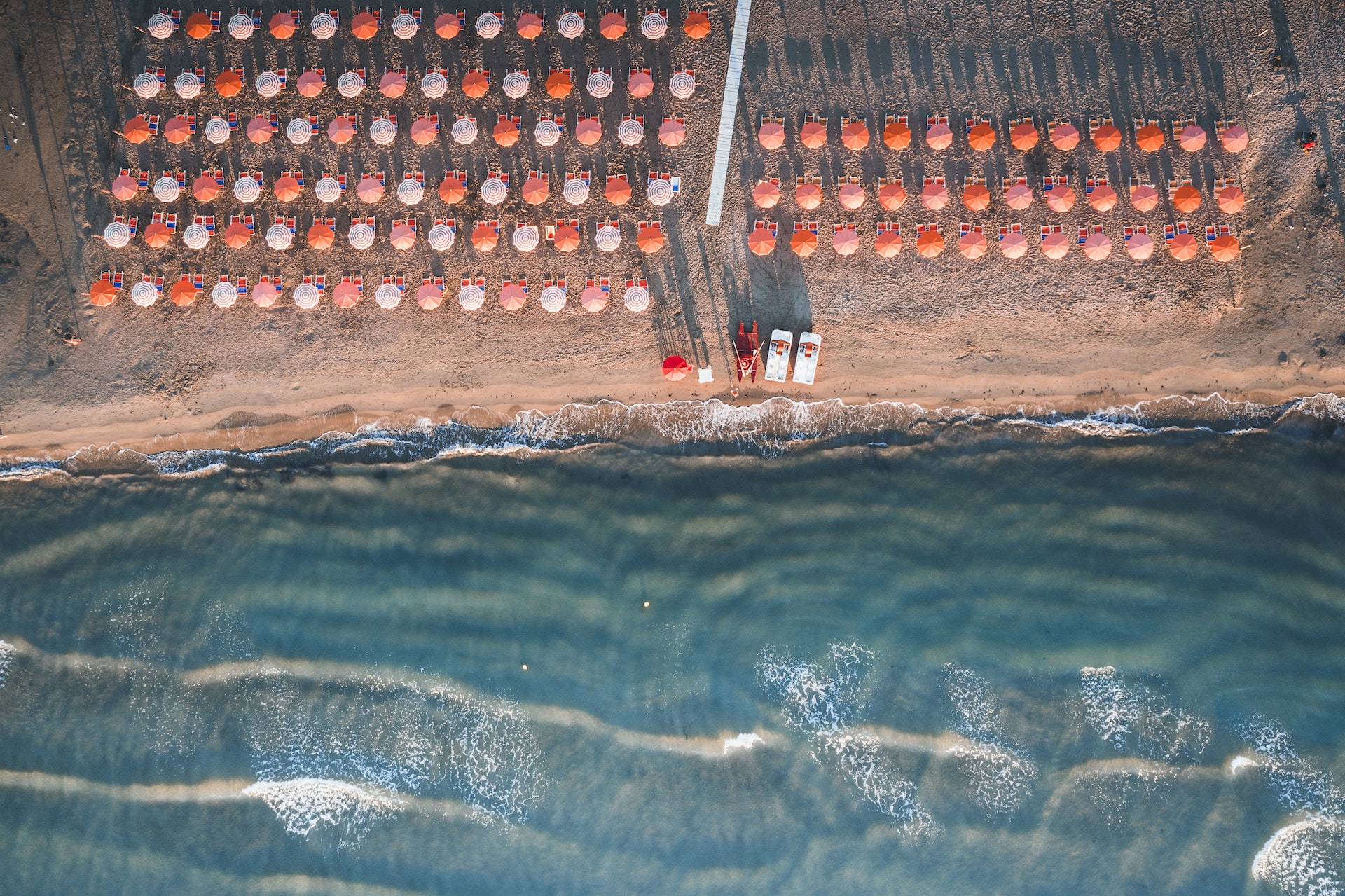
2. Promontorio del Gargano
A chocolate box of photogenic paesi (towns) and arresting natural beauty, the Gargano Promontory is an all-in-one treat in Puglia’s northeast. Clifftop Vieste and Peschici make for ideal bases, their bright, Arabesque streets scattered with fluttering laundry, color-popping geraniums and seafood trattorie. In the warmer months, boat tours sail from their harbors to Gargano’s dazzling sea caves, coves and stacks.
Both towns are also summer gateways to the nearby Tremiti Islands, where fragrant hikes, crystal-clear seas and a medieval abbey make for an evocative offshore escape. Behind Vieste and Peschici, twisting backroads and hiking trails criss-cross the rugged, mountainous expanse of the Parco Nazionale del Gargano, home to ancient woodlands and brooding mountain villages. The prettiest of the lot is Monte Sant’Angelo, where, according to the faithful, the Archangel Michael made several apparitions in the fifth century.
3. Polignano a Mare
Flat-roofed, cube-shaped buildings sprout directly from the cliffs in Polignano a Mare, precariously perched above a turquoise Adriatic. Its nail-biting location and sun-peeled charm is not lost on the thousands of holidaymakers who squeeze into its centro storico (historic center) each summer. For many, trip goals include a dip at Insta-famous Cala Porto beach. For others, it’s a reservation at Grotta Palazzese, a fine-dining restaurant some may argue is better known for its spectacular setting (in a cave right above the sea) than its value for money.
Consider visiting the town either side of July and August to avoid the heftiest crowds, and make time for its excellent Museo Pino Pascali, an abattoir-turned-contemporary art gallery dedicated to the great, late Puglian artist Pino Pascali.
Local tip: Try the town’s caffè speciale, coffee spiked with sugar, cream, lemon zest and Amaretto. It’s said that the drink was invented by Mario Campanella at his eponymous bar-gelateria Mario Campanella Il Super Mago Del Gelo.
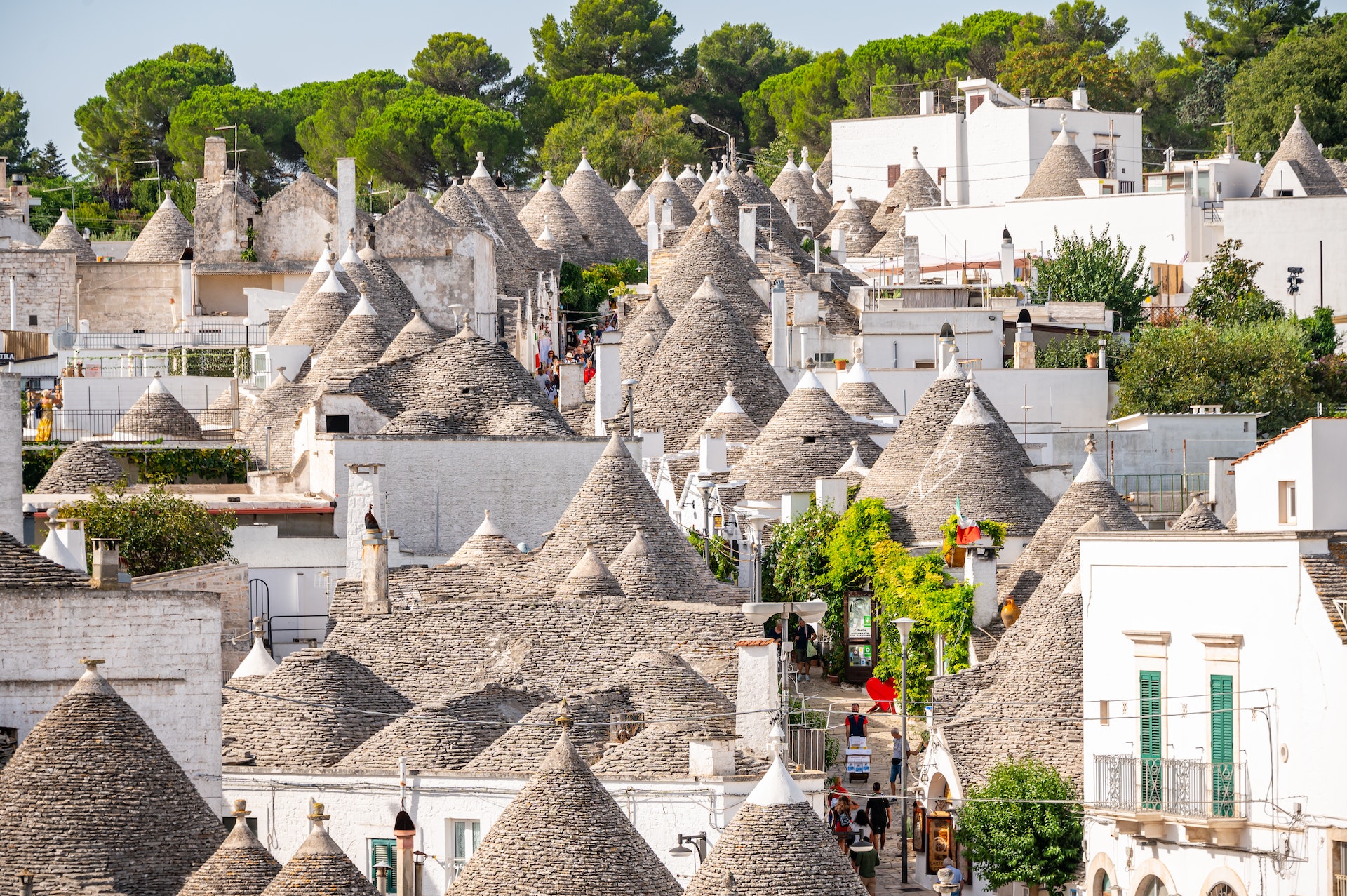
4. Valle d’Itria
Should Snow White and her seven besties ever move to Italy, World Heritage-listed Alberobello is where you’ll find them. The most visited town of the bucolic, vine-laced Valle d’Itria, its peculiar trulli (limestone abodes crowned with conical roofs) are a fabulously surreal sight, clustered together like giant beehives in a fantastical fairy tale. You can wine, dine and shop in many of them, as well as learn about their past at Trullo Sovrano, a "living" museum capturing trullo life in the 19th century.
While several of Alberobello’s trulli offer accommodation, consider exploring the town as a day trip and basing yourself instead in one of the valley’s lesser-known jewel-box towns. Among them is chic, whitewashed Ostuni, rustic Cisternino and baroque Martina Franca. Foodies know the latter for its capocollo, a delicately sweet cured meat regarded as the king of Puglia’s salami.
Planning tip: From mid-July to early August, Martina Franca hosts the Festa della Valle d’Itria, a renowned music festival focused on opera.
5. Grecìa Salentina
From Campania to Sicily, ancient Hellenic ruins attest to a time when much of southern Italy was part of Magna Graecia. Lesser known is the mark left by the Byzantine-era Greeks. It’s an influence still palpable in Puglia’s Grecìa Salentina (Greek Salentine), an area comprising of 12 low-rise towns (Calimera, Carpignano Salentino, Castrignano de' Greci, Corigliano d'Otranto, Cutrofiano, Martano, Martignano, Melpignano, Sogliano Cavour, Soleto, Sternatia and Zollino) to the south of Lecce. Here, Griko, a variant of neo-Greek, is still spoken and it’s not unusual to see signs written in Griko or Greek. If time is limited, focus your attention on Corigliano d’Otranto (home to one of Puglia’s most impressive castles), Melpignano and Martano. The latter two towns feature on the coveted Borghi Autentici d’Italia (Authentic Hamlets of Italy) list.
Planning tip: Several of Martano’s beautiful, private courtyards are open to the public during Cortili Aperti (Open Courtyards), a three-night event in late July. In August, Grecìa Salentina celebrates its soulful pizzica folk dance with the Notte della Taranta festival.
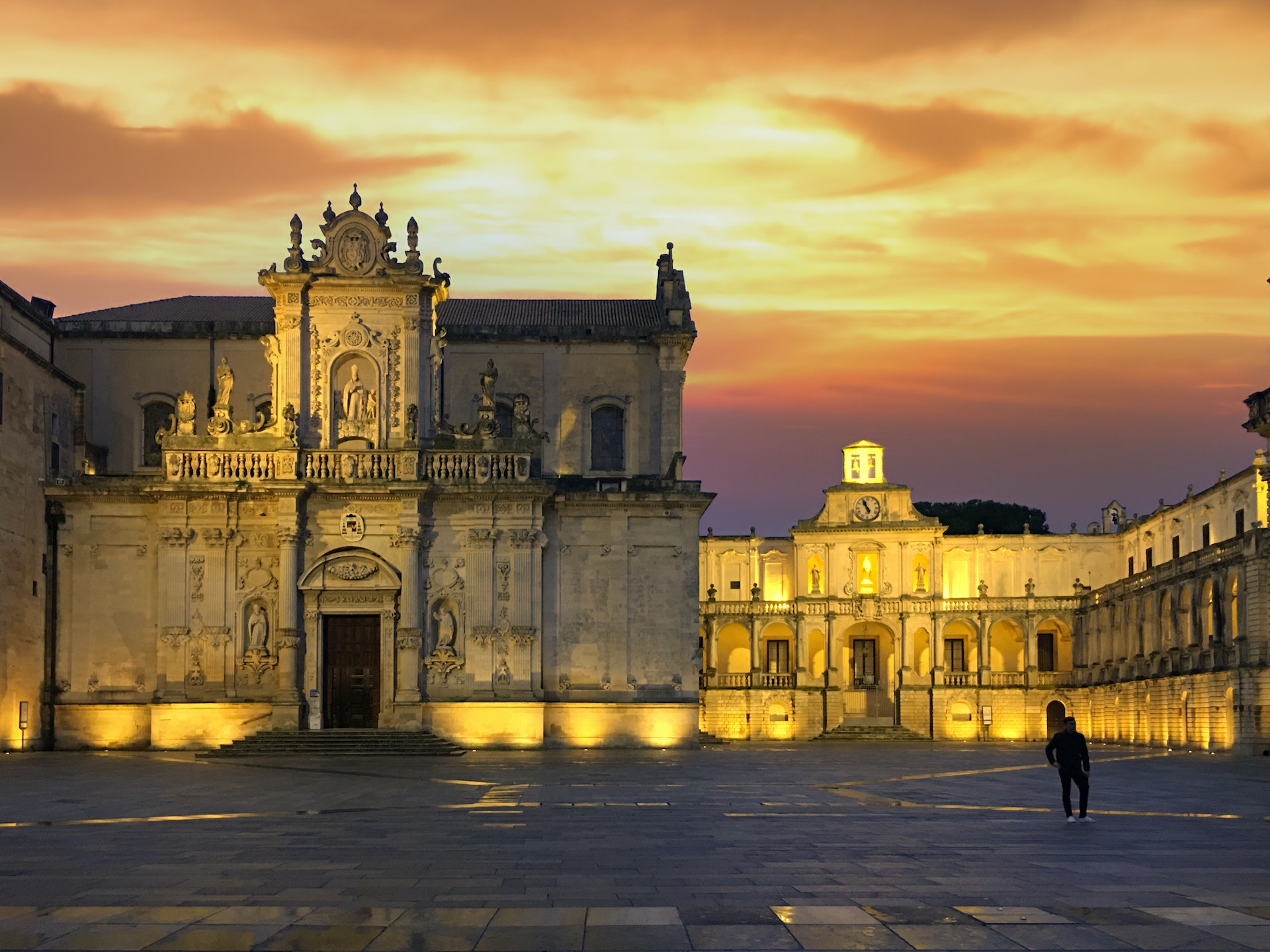
6. Lecce
Erudite Lecce is often called the "Florence of the South." That said, Puglia’s architectural show-off leaves Renaissance restraint to the Tuscan capital, reveling instead in its high-octane take on baroque – barocco leccesse. For the city’s 17th- and 18th-century architects, more really was more, a philosophy captured in hyper-theatrical buildings like the Duomo, Palazzo Vescovile and Basilica di Santa Croce. The latter’s intricately carved facade is one of Italy’s architectural masterpieces.
Of course, Lecce’s backstory is much older than its Counter-Reformation showstoppers. On Piazzetta Castromediano Sigismondo, glass floor panels offer a glimpse of a Renaissance oil store. At nearby Museo Faggiano, a mundane search for a sewage pipe led to the discovery of millennia-old subterranean relics, among them a pre-Christian Messapian tomb and a Roman granary.
7. Otranto
Over 800 locals were slaughtered when the Ottomans invaded Otranto in 1480. Today, their skulls make for an unconventional welcome committee at the city’s Romanesque cathedral. What makes this hulking landmark unmissable, however, is its action-packed mosaic floor, one of the largest and most intriguing ever executed in medieval Europe. Located a mere 72km (45 miles) from the Balkan coast, it’s not surprising that Otranto’s backstory is riddled with occupations and liberations. Sleuth around its compact old quarter to peel the past off in layers – Greek, Roman, Turkish and Napoleonic. In summer, peel down to your swimsuit; Otranto’s beaches are among the most inviting in Puglia.
8. Gallipoli
Gallipoli is the epitome of southern Italian seduction: Mauritian-blue seas, laid-back locals and a picture-perfect Old Town heady with the scent of freshly fried seafood. A dense warren of intimate squares and bar-studded alleyways, the Old Town occupies a tiny island connected to the mainland by a causeway. Come July and August, the hip and the beautiful descend en masse to lap up Gallipoli’s superlative beaches, chic vibe and hedonistic nightlife. Not that it’s all beach clubs and bronzed pin-ups. Gallipoli harbors the Cattedrale di Sant’Agata, a shining example of barocco leccese architecture, and the extraordinary Frantoio Ipogeo, a subterranean, 17th-century olive press. It’s also home to the mysterious Fontana Greca (Greek Fountain), an intricately carved monument whose exact origins are still up for debate.
Planning tip: Consider visiting Gallipoli in June or September to enjoy the beaches, clubs and warmth sans the peak-season masses.

